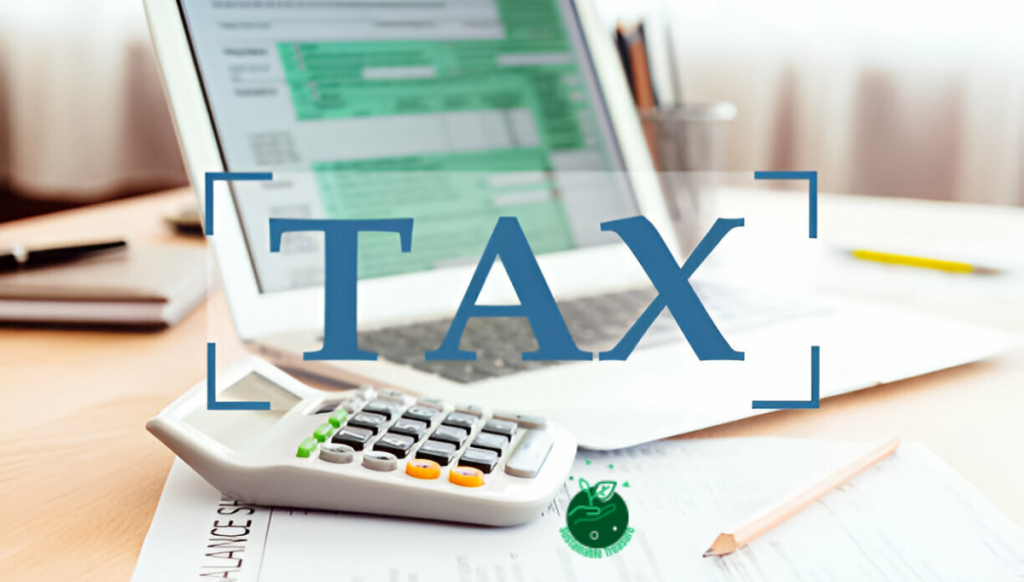Table of Contents
How can wind energy tax credits maximize returns on investment? Absolutely, wind energy tax credits are the key to unlocking substantial returns for investors in this booming renewable sector.
My uncle, a visionary entrepreneur, took a leap of faith and invested in a wind farm project just outside of Abilene, Texas.
Despite the substantial upfront costs, he was able to leverage federal tax credits and local incentives, turning his ambitious dream into a lucrative reality.
His unwavering commitment to sustainability and trust in renewable energy policies paid off handsomely.
In the following sections, I’ll delve deeper into the various tax credit programs, eligibility criteria, and strategies to optimize your wind energy investments for maximum profitability.
Understanding Wind Energy Tax Credits

Wind energy tax credits are financial incentives provided by governments to support the development and adoption of wind power.
These credits can take various forms, such as production tax credits (PTCs), investment tax credits (ITCs), and renewable energy grants. Here’s a brief overview of the most common types of wind energy tax credits:
Production Tax Credit (PTC)
The Production Tax Credit (PTC) is a federal tax credit that provides a per-kilowatt-hour (kWh) incentive for electricity generated by qualified wind energy facilities. The PTC is currently available for wind projects that begin construction before the end of 2024. This credit has been instrumental in driving wind energy development in the United States.
Investment Tax Credit (ITC)
The Investment Tax Credit (ITC) is a one-time federal tax credit based on a percentage of the qualifying project’s capital costs. The ITC applies to various renewable energy technologies, including wind. The credit is typically claimed in the year the project is placed in service.
Renewable Energy Grants
In addition to tax credits, some states and municipalities offer renewable energy grants to support wind energy projects. These grants can help offset upfront costs, making wind energy projects more financially attractive.
Maximizing Returns with Wind Energy Tax Credits
To maximize returns on investment in wind energy projects, it’s crucial to understand and navigate the complex landscape of tax credits and incentives. Here are some strategies to consider:
1. Comprehensive Planning and Analysis
Conduct thorough financial modeling and analysis to determine the potential impact of wind energy tax credits on your project’s ROI. Consider factors such as project size, location, and expected energy production. This analysis will help you make informed decisions and optimize your investment strategy.
2. Leverage Federal and State Tax Credits
Take advantage of both federal and state-level tax credits and incentives. While the federal PTC and ITC are widely utilized, many states offer additional tax credits, grants, or other incentives for wind energy projects. Combining these incentives can significantly boost your project’s financial viability.
3. Explore Tax Equity Financing
Tax equity financing is a popular financing structure in the renewable energy industry. It involves bringing in tax equity investors who can utilize the available tax credits and incentives more effectively. This approach can provide upfront capital for project development while maximizing the value of tax credits.
4. Monitor Legislative Changes and Policy Updates
Stay informed about changes in wind energy legislation and policy at the federal, state, and local levels. Tax credits and incentives are subject to periodic revisions, extensions, or phase-outs. Staying ahead of these changes can help you plan and adjust your investment strategy accordingly.
5. Seek Professional Guidance
Navigating the complexities of wind energy tax credits and incentives can be challenging. Consider seeking guidance from tax professionals, legal experts, and renewable energy consultants. Their expertise can help you ensure compliance, maximize benefits, and avoid potential pitfalls.
Real-World Examples and Case Studies
To illustrate the impact of wind energy tax credits on project economics, let’s examine a few case studies:
[Example 1: Large Wind Farm Project]
A developer constructed a 200 MW wind farm in Texas, taking advantage of the federal PTC and state-level incentives. By leveraging these tax credits and implementing a tax equity financing structure, the project achieved a 15% internal rate of return (IRR) and a payback period of 8 years.
[Example 2: Community Wind Project]
A community-owned wind project in Minnesota utilized the federal ITC, state production incentives, and local grants. The combination of these incentives allowed the project to offer competitive electricity rates to local residents while providing a reasonable return on investment for the community investors.
FAQs

What Is The Offshore Wind Tax Credit Program?
The Offshore Wind Tax Credit Program is a federal incentive designed to support the development of offshore wind energy projects in the United States. It provides a tax credit of 1.5 cents per kilowatt-hour of electricity generated by qualified offshore wind facilities during the first 10 years of operation. This credit aims to make offshore wind projects more financially viable and encourage investment in this emerging renewable energy sector.
What Is The Tax Credit For Wind Energy In Iowa?
Iowa offers several tax credit programs to promote wind energy development within the state. One notable initiative is the Renewable Energy Tax Credit, which provides a tax credit of 1.5 cents per kilowatt-hour of electricity generated by qualified wind energy facilities. Additionally, Iowa offers a Wind Energy Production Tax Credit, which provides a credit of up to $1.5 million per year for wind energy producers. These incentives help offset the costs of wind farm construction and operation, making Iowa an attractive location for wind energy investment.
Does Wind Get An Itc?
Yes, wind energy projects are eligible for the Investment Tax Credit (ITC) at the federal level. The ITC is a one-time tax credit based on a percentage of the qualifying project’s capital costs. For wind energy projects, the ITC is currently set at 30% of eligible costs. This credit can be claimed in the year the project is placed in service, providing a significant upfront financial incentive for wind energy development.
How To Calculate Renewable Energy Credits?
Renewable Energy Credits (RECs) are tradable certificates that represent the environmental attributes of one megawatt-hour (MWh) of renewable energy generation. To calculate RECs, you need to determine the amount of renewable energy produced by a facility and multiply it by the appropriate conversion factor. For example, if a wind farm generates 100,000 MWh of electricity in a year, it would earn 100,000 RECs (1 REC per MWh). The value of these RECs can then be calculated based on market prices or compliance obligations.
What Is The Benefit Of Offshore Wind Energy Projects?
Offshore wind energy projects offer several benefits:
- Abundant and consistent wind resources: Offshore locations often have stronger and more consistent wind patterns, leading to higher energy production.
- Reduced land-use conflicts: Offshore wind farms do not compete for land resources with other activities such as agriculture or urban development.
- Proximity to coastal load centers: Many high-population areas are located near coastlines, reducing transmission losses and costs.
- Environmental benefits: Offshore wind energy is a clean, renewable source that does not produce greenhouse gas emissions or other pollutants.
Who Pays For Iowa Wind Turbines?
Wind turbines in Iowa are typically financed through a combination of private investment, tax incentives, and power purchase agreements (PPAs).
https://windexchange.energy.gov/projects/tax-creditsPrivate developers and energy companies often provide the initial capital for wind farm construction, while taking advantage of federal and state tax credits, such as the Production Tax Credit (PTC) and the Renewable Energy Tax Credit in Iowa.
Additionally, PPAs with utilities or large energy buyers provide a stable revenue stream, helping to secure financing for wind projects.
These agreements involve the buyer purchasing the electricity generated by the wind farm at a predetermined rate over a long-term contract, typically 20-25 years.
What Is The Policy Of Wind Energy?
Wind energy policy refers to the various regulations, incentives, and frameworks established by governments to support the development and deployment of wind power. Key aspects of wind energy policy may include:
- Renewable energy targets or mandates
- Tax credits and financial incentives
- Grid integration and transmission policies
- Permitting and siting regulations
- Research and development initiatives
- Environmental and wildlife impact assessments
These policies aim to create a favorable environment for wind energy investment, address potential challenges, and facilitate the transition towards a more sustainable and diversified energy mix.
What Does Itc Stand For In Energy?
In the context of energy, ITC stands for Investment Tax Credit. The Investment Tax Credit (ITC) is a federal tax credit designed to promote the adoption of various renewable energy technologies, including solar, wind, geothermal, and fuel cells.
The ITC provides a one-time tax credit based on a percentage of the qualifying project’s capital costs. For example, the current ITC for solar energy systems is 30% of eligible costs, meaning that a solar project with $100,000 in qualifying expenses would receive a $30,000 tax credit.
The ITC has been a significant driver of renewable energy investment in the United States, helping to offset upfront costs and improve project economics for developers and homeowners alike.
Conclusion
Wind energy tax credits play a vital role in promoting the adoption of wind power and supporting the transition towards a cleaner energy future.
By understanding and strategically utilizing these incentives, developers, investors, and project owners can maximize their returns on investment in wind energy projects.
However, it’s essential to stay informed about legislative changes and seek professional guidance to navigate the complexities of tax credits and incentives effectively.
As the demand for renewable energy continues to grow, leveraging wind energy tax credits can help make wind power projects more financially viable and contribute to a sustainable energy future.



